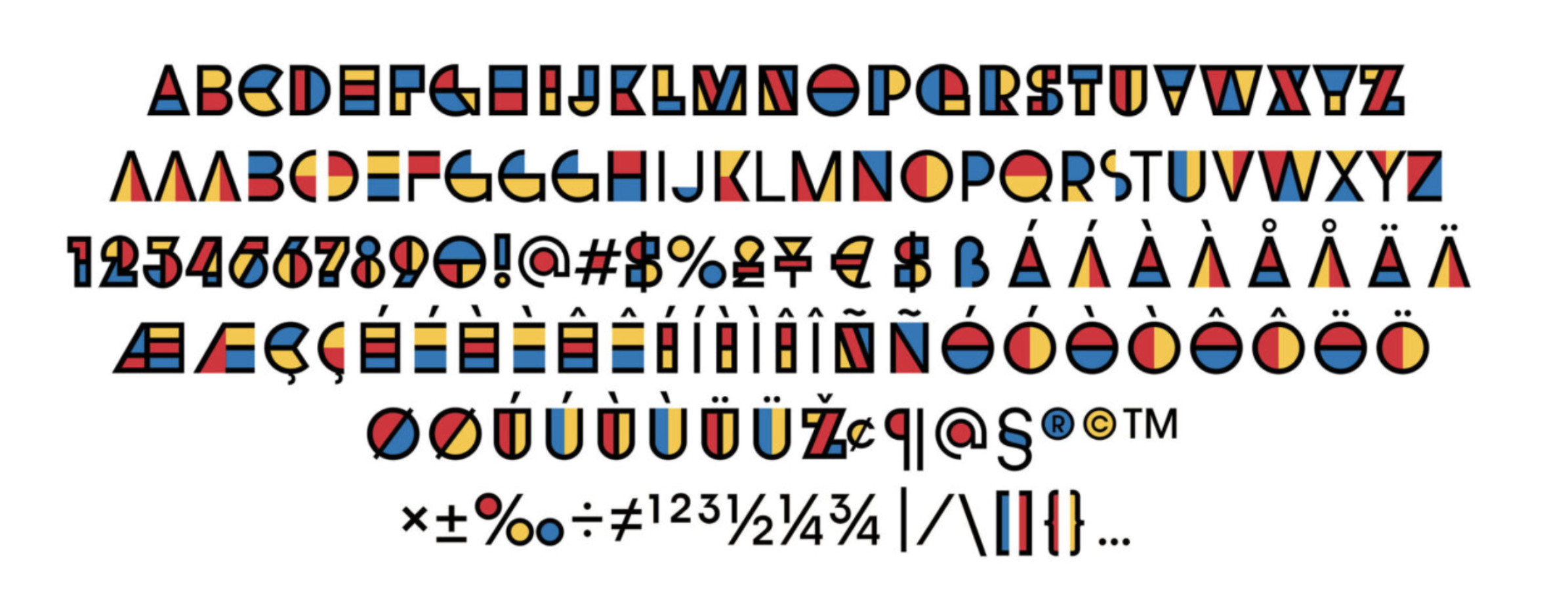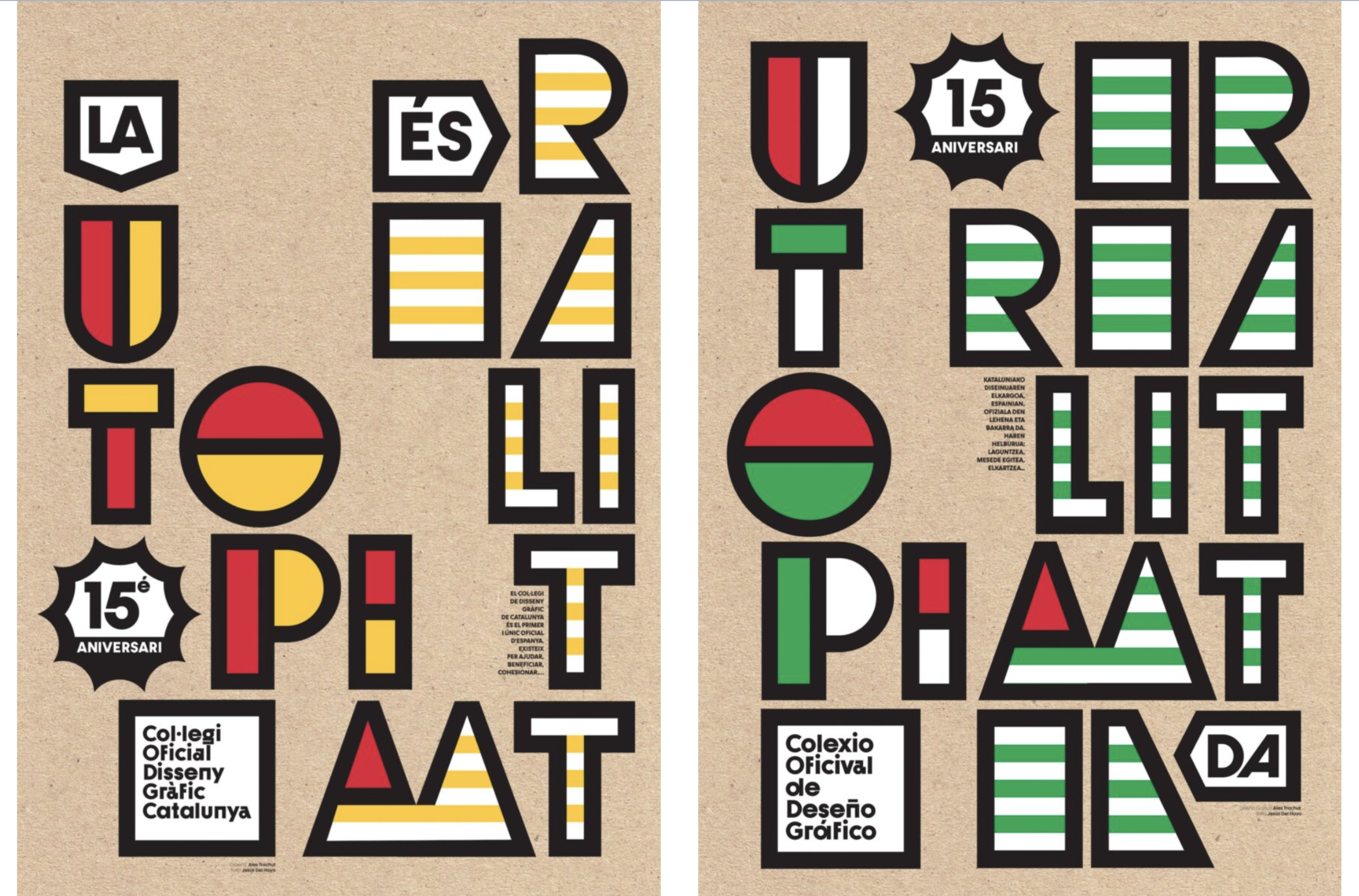Typeface: Utopian
Concept and Origins
Utopian is a vibrant and geometric color font created by Alex Trochut. Inspired by modernist ideologies such as De Stijl and Bauhaus, it was designed to merge color, form, and message into one cohesive typographic system. This typeface pushes boundaries by using basic shapes—circles, triangles, and rectangles—filled with bold color blocks that create visual rhythm and personality within each glyph. Trochut intended Utopian not just to be read but to be viewed, experienced, and felt.
Trochut’s love for visual experimentation led to the development of Utopian as a commentary on modern visual culture. Released as part of his 2018 font collection, it was one of the earliest commercially available chromatic fonts using OpenType-SVG technology. Each letter is a mini composition, channeling artistic traditions into modern design tools.

Design Language
Trochut used a strict modular grid to create Utopian, with each letter fitting into a square cell system. Yet within this structure, the font plays freely with diagonals, fills, and layering. The result is a typeface that feels constructed yet expressive—perfectly aligned with Trochut’s vision of typography as image.
The choice of primary colors—red, yellow, and blue—along with bold black outlines echoes Mondrian’s palette and constructivist poster aesthetics. Utopian is a design playground where constraint meets creative outburst. It is not meant for body text or subtle branding—it is a display face meant to provoke, celebrate, and decorate.
Poster Applications
One of the most iconic uses of Utopian was in Trochut’s collaboration with design institutions like the Col·legi Oficial de Disseny Gràfic de Catalunya. Posters celebrating the 15th anniversary of the organization showcased Utopian’s full potential—large, legible, and undeniably joyful. Each letterform became part of a visual mosaic where language and decoration fused into a unified message.
Different regional editions of the poster even adapted the letterfills to local flags and colors, showing how Utopian could reflect cultural identity without changing its structure. It stood as an example of how typography can be flexible, meaningful, and fun all at once.

Legacy and Influence
Utopian has influenced a new generation of type designers interested in color fonts, expressive grid systems, and type-as-image philosophies. It exemplifies Trochut’s core belief: typography is not passive—it is emotional, political, playful, and powerful. With Utopian, the alphabet becomes a manifesto for creative freedom and joyful communication.